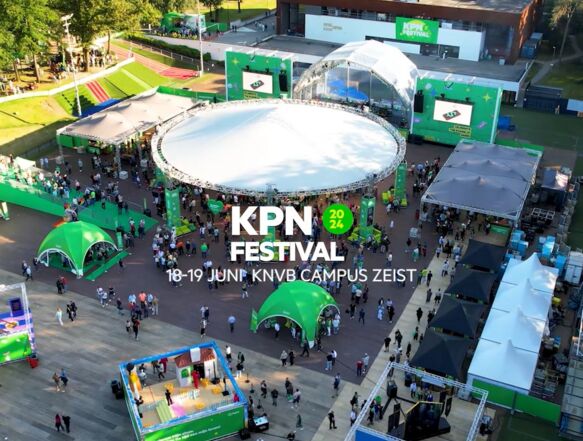- 25-06-2024
How do we ensure that the deployment and management of fiber optic networks run smoother than they currently do?
By combining data more intelligently and involving stakeholders earlier, they find at the combined project team FAN Advanced Analytics. We speak with Amber, Anne, Britt, and Rob at their office in Amersfoort. "We don't want to just throw data over the fence."
FAN Advanced Analytics is a collaboration between two data teams at KPN. Both are involved in the data necessary for the construction, delivery, and management of KPN's fiber optic and copper network. A relevant task, as by 2028, 80 percent of addresses in the Netherlands must be connected to fiber optic.
Amber and Anne work at DataFAN (Data Fixed Access Networks). They structure data from various sources, such as the register of cables in the ground, information about deployment activities, and damage reports. It involves many petabytes, over 200 million data points, spread across about thirty data sources, updated daily. The team consists of fifteen people in total, ten in the Netherlands and five in India.
Britt and Rob are part of FAN Data & Analytics (Fixed Access Network Data & Analytics). They translate the provided data into information. Information that other departments use to keep internal processes visible, manage the execution of construction work, and report to management. FAN Data & Analytics also comprises fifteen people, all located in the Netherlands.
"We don't want to just throw data over the fence."
Over the fence
The two teams have been working together for some time, but recently their collaboration has become more intensive. Previously, the data engineers from DataFAN provided data, which the information specialists from FAN Data & Analytics used to build information products for other departments. For information analyst Rob, the separation sometimes felt like throwing data over the fence. Opportunities were missed due to limited coordination between data teams and departments. "Data become more valuable when you understand how they originate."
The shared ambitions of the two teams to develop in the field of data science put a definitive end to this separation. As a result, other departments are involved much earlier in the data process than before, says DevOps engineer Anne. "When you know more about how the other thinks and what they do with it, you feel more responsible." According to her, this also leads to new insights and more value for the company.
Explaining and predicting
The project team helps the organization to plan better and eventually predict based on developed datasets and correlations, explains Britt. As a data consultant, she advises internal stakeholders on new information products. "Previously, we were mainly historically analytical. Now we are increasingly analytically explanatory, and soon our products will be truly predictive."
Better forecasting means, for example, that KPN can decide earlier to scale up capacity if the company expects the fiber optic rollout in a certain area to be complex. This leads to fewer unforeseen delays, making the rollout more reliable. Better planning of fiber optic work also communicates more easily to the customer.
Hackathon
The joint project team was formed in 2022 during a hackathon organized by DataFAN. Over several days, various projects were worked on. One of them caught the attention of the information experts from FAN Data & Analytics. Initially, the project focused on raising awareness about the possibilities of data, using fictitious data. Real data was soon introduced.
The machine learning data model for smooth fiber optic rollout is the first tangible result of the collaboration, says Anne. There are also several use cases that can serve as a blueprint for application by other departments involved in the fixed KPN network. Such as for capacity management. In a few years, the joint team expects to have developed more such use cases and to be more aware of the possibilities that the collaboration offers.
“At our company, you have the opportunity to pioneer, and that's what we do here.”
Pioneering
That new collaborations between different teams arise from a hackathon is also encouraged by KPN, the enthusiastic quartet knows. "At our company, you have the opportunity to pioneer, and that's what we do here," says DevOps engineer Amber. "We're not experts in data science; there's a central team within our company that handles the big projects. But we're closer to the business and work on small use cases that still add value. On a small scale, we recognize opportunities, for example, by improving data and making it easier to access."
The collaboration is also of great value on a personal level, concludes Rob. "It's good for everyone's development. Think of it as a sort of mini breeding ground. The average KPN employee is very entrepreneurial, and that's encouraged by the company. Courage, trust, and growth are our core values. Making mistakes is okay, as long as you provide feedback."
However small the joint project team is, other parts of KPN are already approaching them with questions about the application of the data model they built together. And that makes the team members proud. Through their efforts, perhaps no byte will be thrown over the fence to other departments in the long run.
Personal Stories
Anne - DevOps engineer bij DataFAN | KPN
Rob FAN Data & Analytics | KPN
Britt - Data & Analytics consultant | KPN
Amber - DevOps engineer bij DataFAN | KPN



